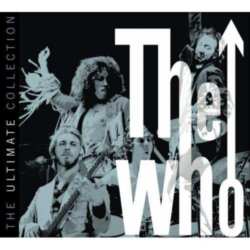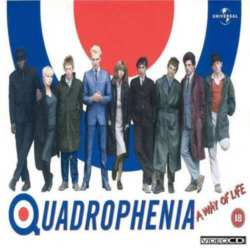The Mods and Rockers might not be a music genre in themselves, but they were certainly very involved in the music scenes of the 1960's - so with that in mind, we at FemaleFirst decide it's about time they get a bit of recognition.

Mods & Rockers
The Mods and Rockers were two conflicting British youth subcultures and in turn, their vicious fighting in 1964 sparked a moral panic about British youths, and the two groups were seen as folk devils.
The rockers adopted a macho biker gang image, wearing clothes such as black leather jackets whilst, the mods adopted a pose of scooter-driving sophistication, wearing suits and other clean-cut outfits.
Rockers
The rockers swanned around looking as scary as humanly possible as they blasted their heavy motorcycles and bought expensive leather jackets whilst constantly poured scorn on the mods, who often looked pretty whilst they wore suits and rode scooters.
In the rockers opinion, the mods were weedy, effeminate snobs, who saw the rockers as out of touch, oafish and grubby; so needless to say, there was not much common ground when it came to music tastes either.
The rockers were big fans of 1950's Rock and Roll, and favoured white American artists such as Elvis Presley, Gene Vincent and Eddie Cochran whilst the Mods generally favoured 1960s rhythm and blues, soul and ska by black American and Jamaican musicians, although many of them also liked British R&B/beat groups such as The Who, The Small Faces and The Yardbirds.
Mods
Like most gangs of their time, The Mods had a very distinct, yet common interest in music, and the first thing that alarmed the mainstream public was the fact that whilst most people were going crazy for The Beatles, the first-wave of Mods pursued a different sound.
They adopted modern jazz, which was a style of music originated in Black America and through the jazz music of Black America, the Mods appeared to distinguish themselves from mainstream society. They seemed to be attracted to the "cool" demeanor and elegant clothing possessed by jazz musicians, and strived to emulate their style.
The American Jazz records were difficult to obtain in Liverpool, but the Mods preferred it this way, like most of today's Indie kids, they hated commercialism and were drawn towards obscurity in their taste of music, so as jazz grew in popularity, the Mods began listening to Blues, Soul, Rhythm & Blues, and then moved on to Jamaican Bluebeat and Ska to stay ahead of the mainstream.
The most popular and revolutionary band who could be labeled as Mods themselves were the High Numbers, later renamed The Who; they wore Mod outfits, had Mod hairstyles, and sang blues-based songs about being Mods, such as "I'm the Face", and "My Generation". The Who's performance often included Pete Townshend (guitarist) smashing his guitar into the speakers, as well as Keith Moon (drummer) knocking over his drums. The Who's violence on stage personified the aggression inherent in the Mod subculture.

The original mods spent a lot of their spare time at all-night clubs such as The Roaring Twenties, The Scene, La Discotheque, The Flamingo and The Marquee in London to hear the latest records and to show off their clothes and dance moves. As mod spread across the UK, other clubs became popular such as Twisted Wheel Club in Manchester.
Black American servicemen, stationed in the UK during the Cold War, also brought over rhythm and blues and soul records that were unavailable in Britain, and they often sold these to young people in London.
The influence of UK newspapers on creating the public perception of mods as having a leisure-filled club-going lifestyle can be seen in a 1964 article in the Sunday Times. The paper interviewed a 17-year-old mod who went out clubbing seven nights a week and spent Saturday afternoons shopping for clothes and records.
However, few British teens and young adults would have the time and money to spend this much time going to nightclubs. Jobling and Crowley argue that most young mods worked 9 to 5 at semi-skilled jobs, which meant that they had much less leisure time and only a modest income to spend during their time off.
Publicity
John Covach's Introduction to Rock and its History claims that the two clans were often involved in very public brawls, and from May 1964, the news was filled with reports that mods and rockers were jailed after riots in seaside resort towns on the south coast of England.
In turn, their behaviour led prominent Sociologist, Stanley Cohen to coin the term moral panic in his study Folk Devils and Moral Panics, which examined media coverage of the mod and rocker riots in the 1960s.
Although Cohen admits that mods and rockers had some fights in the mid-1960s, he argues that they were no different than the evening brawls that occurred between youths throughout the 1950s and early 1960s, both at seaside resorts and after football games. He claims that the UK media turned the mod subculture into a negative symbol of delinquent and deviant status. Oops.

If you have absolutely no idea what I'm blabbering on about, you really need to check out the film, Quadrophenia, which depicts some violence within London. Mods sometimes sewed fish hooks into the backs of their lapels to shred the fingers of assailants. Weapons were often in evidence; coshes and flick knives being favoured. Sounds like a Friday night outside my local then.
Eventually, when the media ran out of real fights to report, they would publish deceptive headlines, such as using a subheading "Violence", even when the article reported that there was no violence at all. Newspaper writers also began to use "free association" to link mods and rockers with various social issues, such as teen pregnancy, contraceptives, amphetamines, and violence.
So what if the Mods and Rockers didn’t make top 10 hit songs back in the day? one thing is certain; these guys were as big a part of 1960's music than any other clan. It's just like today’s Goth / Chav divide. Oh, the fickleness of today's youth.
Find out how the Mods And Rockers Influenced Fashions Here
FemaleFirst - Ruth Harrison

